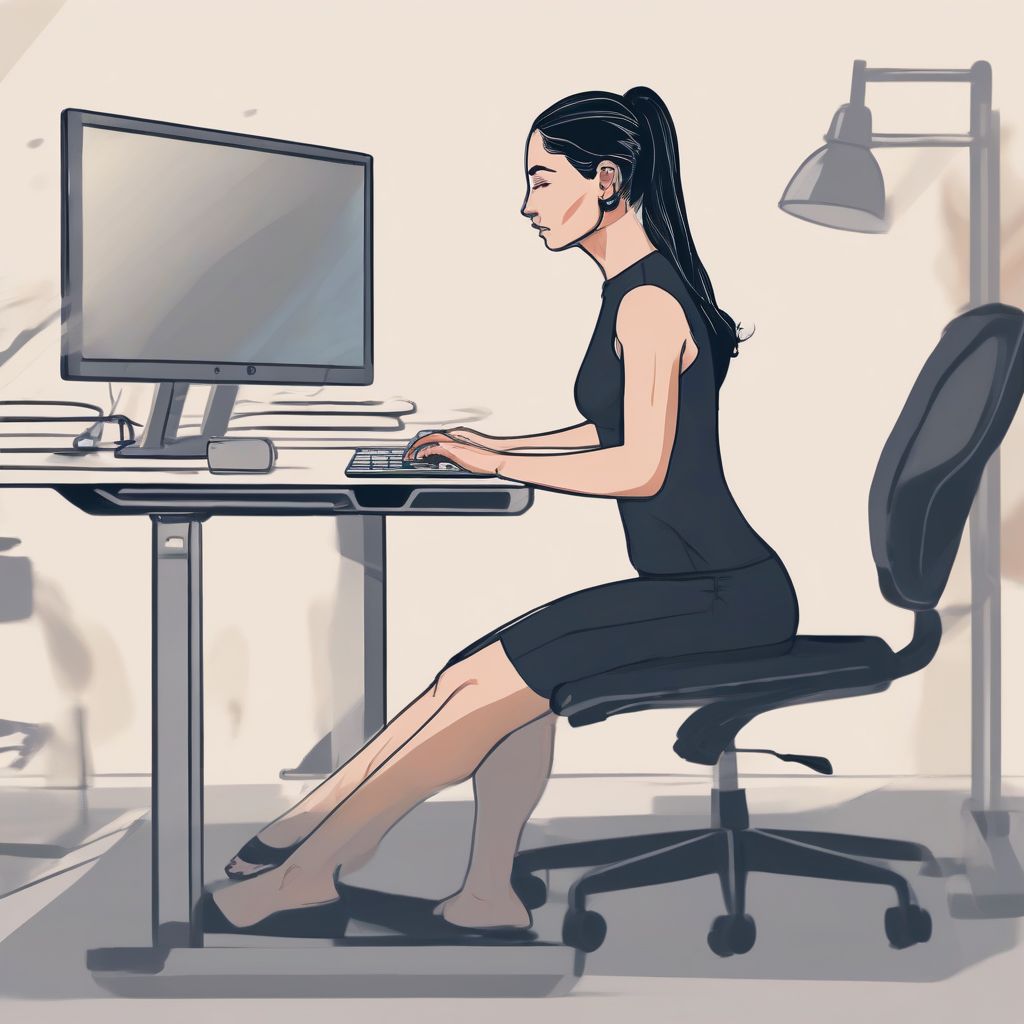Ever wake up with a stiff neck or aching back after a long day at work? You’re not alone. Many people experience discomfort from prolonged sitting, often due to a poorly designed workspace. But what if you could transform your desk from a source of strain into a haven of comfort and productivity? That’s where ergonomics comes in.
Understanding Ergonomics: Your Body’s Best Friend
Ergonomics is all about designing your workspace to fit you, rather than forcing your body to contort into unnatural positions. It’s about optimizing your environment to reduce strain, prevent injuries, and ultimately, help you feel your best. When it comes to desk setups, ergonomics focuses on:
- Posture: Maintaining a neutral spine with your feet flat on the floor.
- Comfort: Reducing pressure points and promoting blood circulation.
- Accessibility: Ensuring frequently used items are within easy reach.
The High Cost of Ignoring Ergonomics
Aches and pains might seem like minor annoyances, but over time, poor ergonomics can lead to serious health problems. Some common consequences of neglecting your workspace setup include:
- Musculoskeletal Disorders (MSDs): Conditions affecting muscles, nerves, tendons, ligaments, joints, cartilage, and spinal discs, often manifesting as carpal tunnel syndrome, tendonitis, and back pain.
- Eye Strain and Headaches: Prolonged screen time and poor lighting can strain your eyes, leading to headaches, blurred vision, and fatigue.
- Reduced Productivity: Discomfort and pain can make it difficult to focus, impacting your work quality and efficiency.
 Ergonomic Desk Setup
Ergonomic Desk Setup
Key Elements of an Ergonomic Desk Setup
Ready to create a workspace that supports your well-being and productivity? Here’s a breakdown of the essential components:
1. The Right Chair: Your Throne of Comfort
- Adjustability: Look for a chair with adjustable height, so your feet rest comfortably on the floor while your thighs are parallel to the ground.
- Lumbar Support: Adequate lower back support is crucial to maintaining a neutral spine and preventing pain.
- Armrests: Adjustable armrests can help reduce shoulder and neck strain, especially if you spend hours typing.
2. Monitor Magic: Protecting Your Vision
- Height and Distance: Position your monitor about an arm’s length away, with the top of the screen at eye level to avoid neck strain.
- Angle: Tilt your monitor slightly upwards to minimize glare and enhance readability.
- Breaks: Follow the 20-20-20 rule: Every 20 minutes, look at something 20 feet away for 20 seconds to reduce eye strain.
3. Keyboard and Mouse Mastery: Avoiding Repetitive Strain
- Ergonomic Design: Consider an ergonomic keyboard and mouse designed to promote a more natural hand and wrist position.
- Placement: Keep your keyboard and mouse close to your body to minimize reaching and strain.
- Wrist Support: A wrist rest can help maintain neutral wrist alignment and reduce pressure on your carpal tunnel.
4. Lighting Matters: Illuminating Your Workspace
- Natural Light: Position your desk near a window to take advantage of natural light, which can reduce eye strain and boost mood.
- Task Lighting: Supplement natural light with a desk lamp to provide focused illumination for your work area.
- Glare Reduction: Use an anti-glare screen protector and adjust your monitor’s brightness and contrast to minimize reflections.
5. The Power of Movement: Breaks and Stretches
- Regular Breaks: Get up and move around every hour to improve circulation, reduce stiffness, and combat fatigue.
- Stretching: Incorporate simple stretches into your workday to target common areas of tightness, such as your neck, shoulders, and back.
- Walking Meetings: If possible, consider taking walking meetings to combine movement with productivity.
Investing in Your Health and Well-being
Creating an ergonomic desk setup is an investment in your long-term health, comfort, and productivity. By making simple adjustments to your workspace, you can significantly reduce your risk of pain, improve your focus, and enhance your overall well-being.
Remember, ergonomics is not a one-size-fits-all solution. Take the time to experiment with different setups and find what works best for your body and work style.
What steps are you taking to create a more ergonomic workspace? Share your tips and experiences in the comments below!
[amazon bestseller=”ergonomic office chair”]
